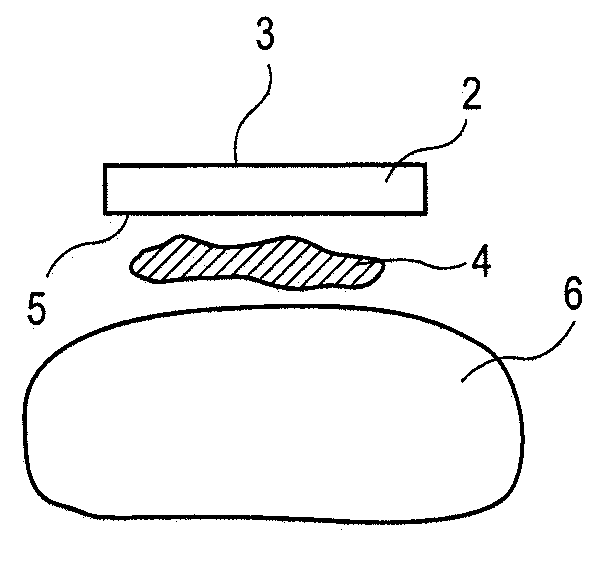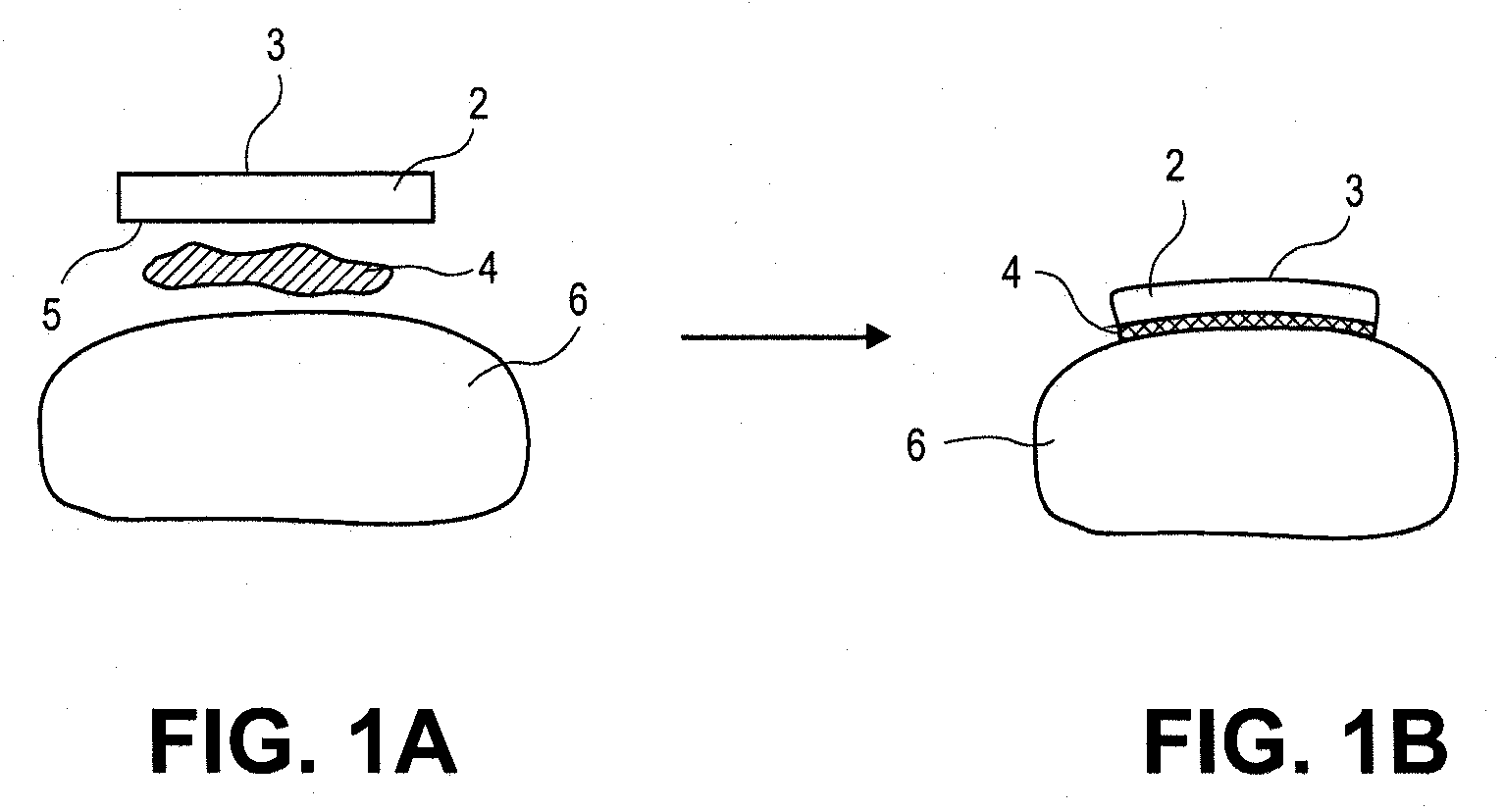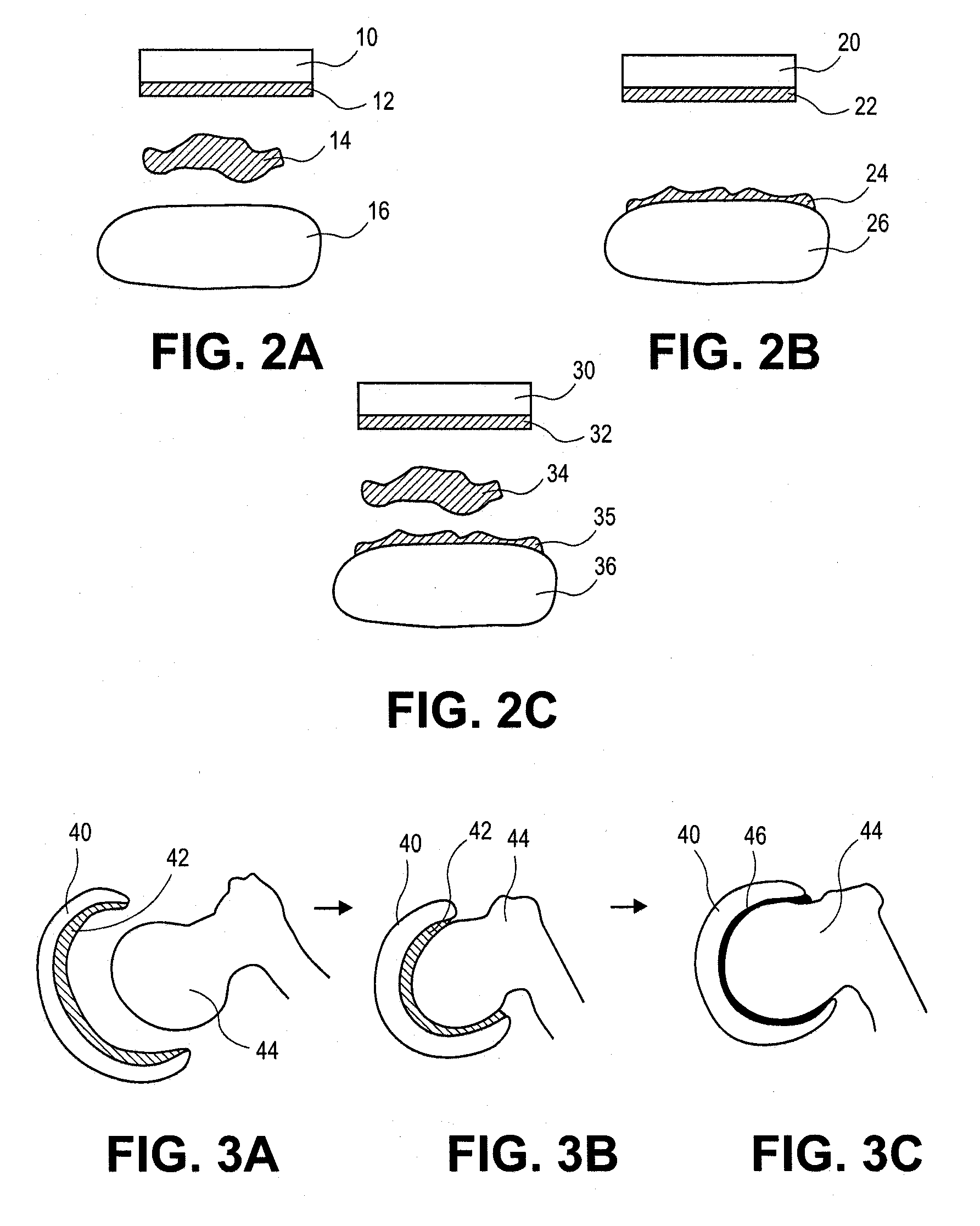Methods, Devices and Compositions for Adhering Hydrated Polymer Implants to Bone
a technology of hydrated polymer and bone, applied in the direction of antithrombotic treatment, drug composition, prosthesis, etc., can solve the problems of exacerbated arthritic pain, uncureable, and the efficacy of the implants is still questioned
- Summary
- Abstract
- Description
- Claims
- Application Information
AI Technical Summary
Benefits of technology
Problems solved by technology
Method used
Image
Examples
Embodiment Construction
[0044]The present invention pertains to a method and composition for adhering hydrated polymers (such as, e.g., hydrogels) to bone and bone-like structures or surfaces. In some embodiments, the hydrated polymer contains accessible chemical functional groups such as amine, hydroxyl, carboxyl, or urethane groups, or combinations of functional groups. It can have a homopolymer, copolymer, semi-interpenetrating or interpenetrating polymer network structure. The invention also pertains to medical implants made with such hydrated polymers and their adhesion to bone and bone-like structures or surfaces. Such medical implants are formed with a lubricious articulating surface designed to replace cartilage and an attachment surface designed for fixation of the implant to bone for use in any joint in the body. The device can be implanted on one side of a joint forming a hydrated polymer-on-cartilage articulation in the mammalian joint. The device could further have a second mating component im...
PUM
| Property | Measurement | Unit |
|---|---|---|
| Pressure | aaaaa | aaaaa |
| Flow rate | aaaaa | aaaaa |
| Transparency | aaaaa | aaaaa |
Abstract
Description
Claims
Application Information
 Login to View More
Login to View More - R&D
- Intellectual Property
- Life Sciences
- Materials
- Tech Scout
- Unparalleled Data Quality
- Higher Quality Content
- 60% Fewer Hallucinations
Browse by: Latest US Patents, China's latest patents, Technical Efficacy Thesaurus, Application Domain, Technology Topic, Popular Technical Reports.
© 2025 PatSnap. All rights reserved.Legal|Privacy policy|Modern Slavery Act Transparency Statement|Sitemap|About US| Contact US: help@patsnap.com



